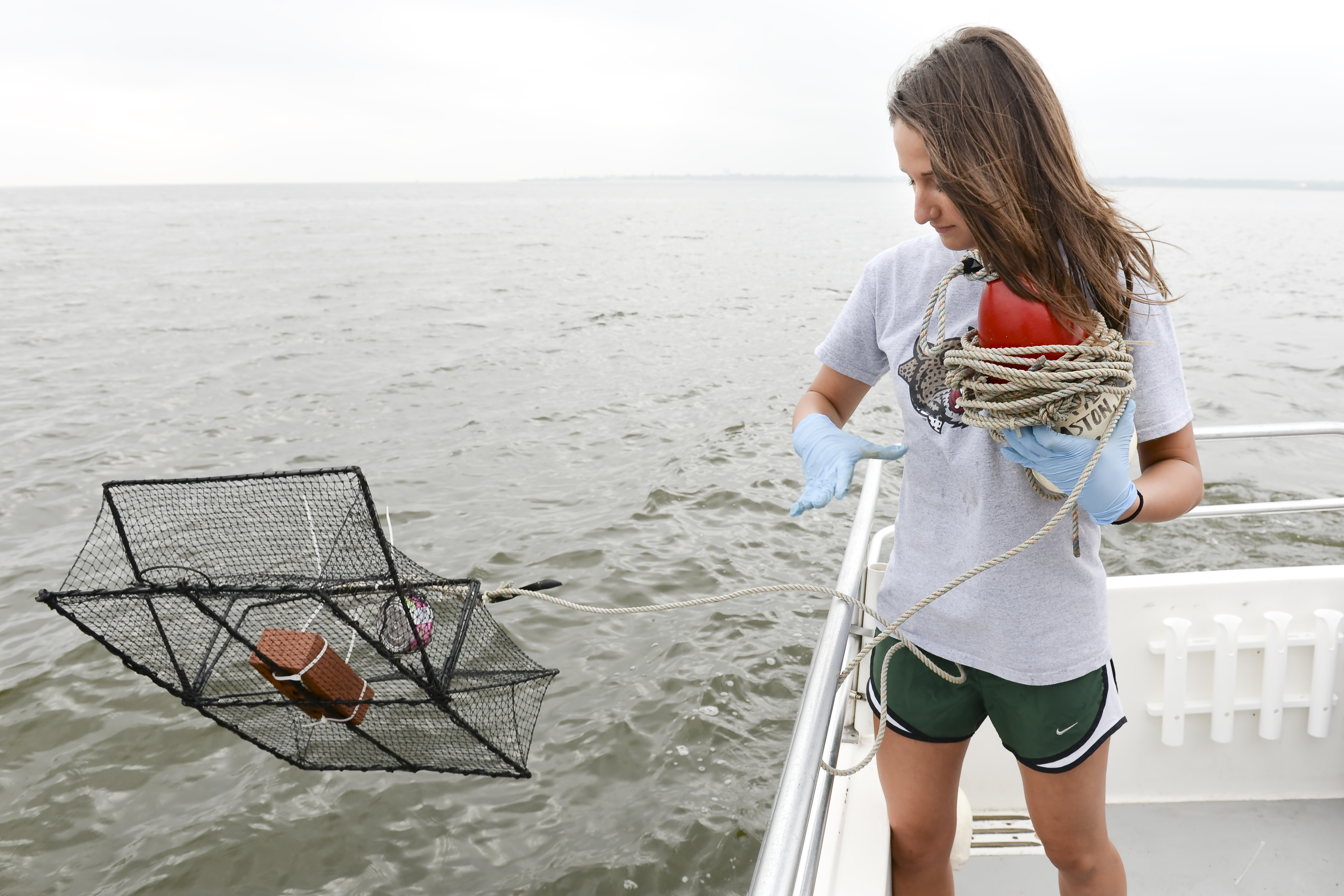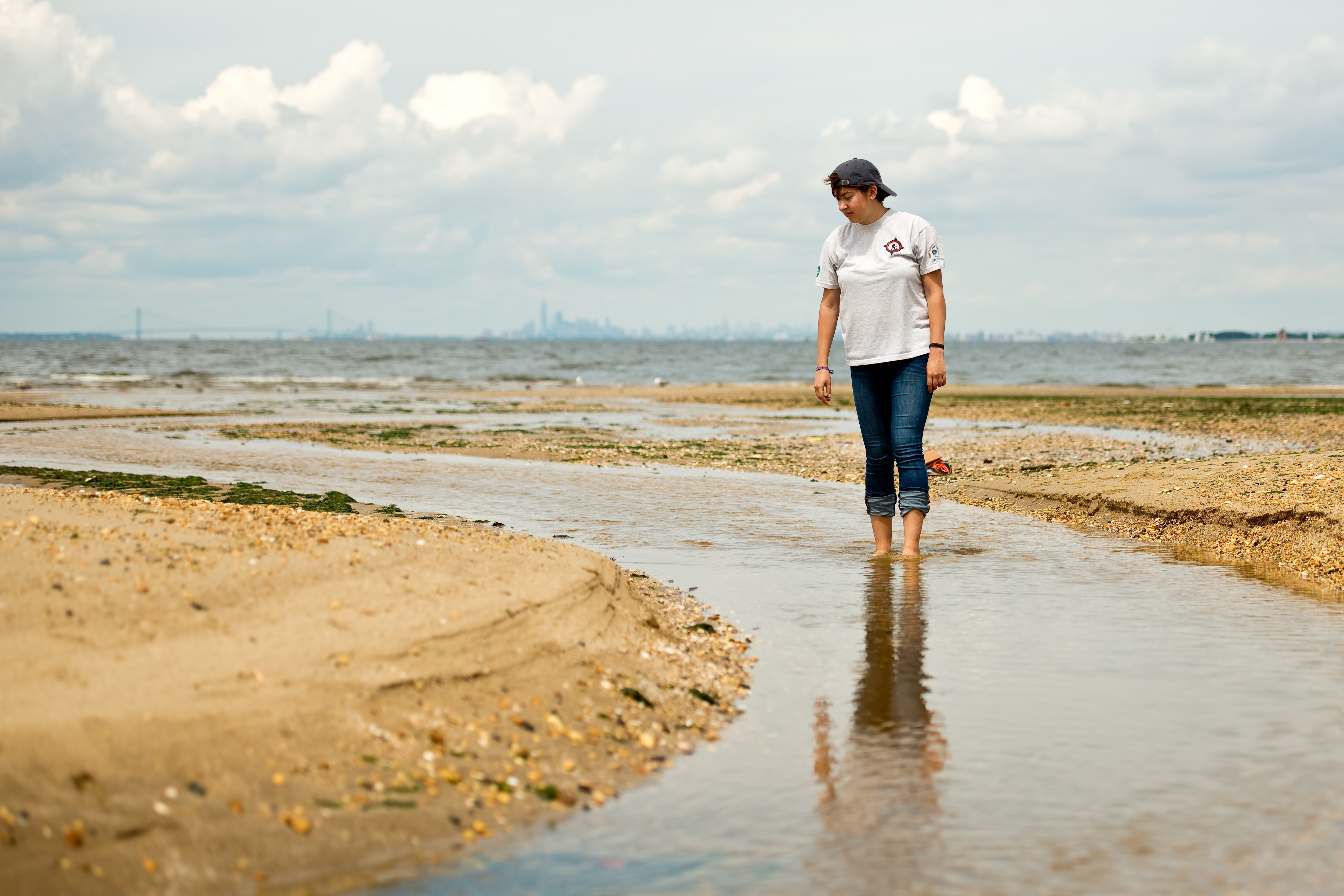
Sarah Woodruff ’15 throwing a crab pot in Raritan Bay to monitor the relative abundance of native versus invasive crabs.
Invasive species (i.e., introduced species that harm human health, the economy, and/or environment) are yet another threat to the diversity and stability of coastal ecosystems. As a result, my students and I have initiated a second research program in Raritan Bay that aims to describe the abundance, distribution, and impact of two recently introduced non-native crabs (i.e., Chinese mitten crab and Asian shore crab) on the economy and environment in Raritan Bay. The mitten crab and Asian shore crab have destroyed biodiversity and economic infrastructures outside of their natural range. Therefore, their relatively recent discovery (i.e., 2007 and 1992 respectively) in the Hudson-Raritan is a serious concern. However, very little is known about the size or distribution of their populations in this system. Additionally, there is no information on the public awareness or social perceptions of these introduced crabs, making it difficult to predict and manage the environmental and social impacts of the invasion.

Blossom Jiang ’19 and Alex Bae ’19 learn about native and invasive crabs in the Hudson-Raritan Bay. Blossom and Alex were Science Horizons students in my lab in January ’16. Science Horizons provides significant mentoring for first-year students.
My research students and I designed a study that integrates aspects of both the natural and social sciences and addresses the following questions: 1) What is the regional abundance and distribution of these non-natives in the Raritan system?, 2) Have these crabs established a breeding population?, and 3) Are local crabbers aware of these two non-native species in the Raritan system, and do they perceive them as a threat? Our monitoring and community outreach efforts related to this project are continuing.

Juliana Ventresca’s ’18 honors thesis research demonstrated that information sharing across information domains for invasive species combines strengths and counteracts weaknesses of each individual approach to provide a clearer picture of invasions and more effectively assess risks.
Using data on the Asian shore crab and Chinese mitten crab in the Hudson-Raritan watershed as a case study, we have also been thinking about the broader applications of this research to marine conservation. All together, our work considers three domains in which information on marine invasive species exist (i.e., ecological monitoring, online reporting databases, and surveys of anglers and crabbers) and the ways in which these sets of information may or may not inform long-term population trends for two crab species recently introduced to a coastal ecosystem. Our findings indicate that information sharing across these information domains is essential for improved understanding of invasion trends, and that for high-risk species, scientists and resource managers must reach outside of their silos. This research was published in the journal, Conservation Biology (Rothenberger et al. 2020).
LAB FAM members who have contributed to this project: Alex Pong ’13, Sarah Woodruff ’15, Juliana Ventresca ’18, Katie Kavanagh ’21, Kurtis Campbell ’25.

For her Honors Thesis, Katie Kavanagh ’21 performed food competition experiments between adult Asian shore crabs and the economically important blue crab to address a scientific knowledge gap. Her results suggested that Asian shore crabs may not pose as great a risk to this native species as anticipated.
